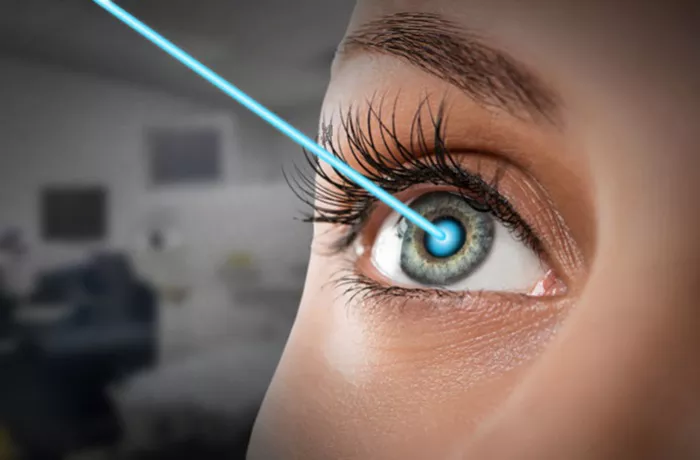In a groundbreaking advancement for eye surgery, the UK has become the first European country to offer a personalised laser eye procedure that enables patients with poor eyesight to achieve “super-vision.” This innovative technique creates a digital 3D clone of the patient’s eye, known as an ‘Eyevatar,’ enabling a customised treatment plan that promises vision beyond standard 20/20 clarity.
The technology, first used today in the UK, tailors treatment based on each individual’s unique visual profile, allowing surgeons to achieve results superior to conventional glasses and laser eye surgery prescriptions. Experts anticipate it may soon become a standard treatment option for thousands of patients with sight loss each year.
The Eyevatar technology simulates an individual’s visual experience, allowing surgeons to virtually perform the procedure repeatedly to refine and perfect outcomes before the surgery is conducted in real life. Clinical trials suggest that this new approach, which costs £6,500 for both eyes, can result in vision sharper than 20/20.
Research published in the Journal of Cataract & Refractive Surgery showed promising results, with a 100 percent success rate for achieving at least 20/20 vision, thus eliminating the need for glasses. Remarkably, half of the trial participants achieved 20/12.5 vision—meaning they can see at 20 feet what a person with normal vision would need to be 12.5 feet away to see. Additionally, around 8 percent of patients attained 20/10 vision, a rare level of clarity experienced by only about one percent of the population.
Early indications also suggest that the technology may enhance night vision, a benefit not previously achievable with laser eye surgery.
David Allamby, an ophthalmologist at London’s Focus Clinic who performed the procedure on six patients, expressed enthusiasm for the technology’s potential to revolutionise corrective eye surgery. One of the first beneficiaries, 50-year-old communications director Rebecca Hackworth, previously struggled with both near-sightedness and the need for reading glasses. Following her surgery, Hackworth is expected to enjoy clear vision both at distance and up close without glasses.
Explaining the process, Mr. Allamby said, “I think it went really well. I treated her right eye with ray-tracing-guided LASIK for blended vision, allowing her right eye to see clearly at a distance while her left eye remains mildly near-sighted for reading.” He added, “The result is clear distance and reading vision without any glasses.”
Developed over nearly two decades, the technology represents a significant step forward in laser eye surgery. The procedure uses ray-tracing technology, which addresses optical imperfections by fine-tuning the laser treatment to minimise aberrations. This customisation raises the benchmark for laser eye surgery, offering patients improved results.
The technology is an advancement in LASIK (Laser-Assisted In Situ Keratomileusis), the most common laser eye surgery in the UK, which reshapes the cornea to correct visual issues like near-sightedness and astigmatism. The new procedure incorporates a Sightmap scanner to create an Eyevatar that maps up to 2,000 light rays as they interact with the eye’s cornea and lens, allowing all rays to be focused precisely onto the retina for optimal clarity.
The UK’s Focus Clinic, popular among celebrities, is at the forefront of offering this innovative treatment. “It’s incredibly exciting technology,” Mr. Allamby said. “If it performs as it did in studies, it could profoundly improve lives. I expect around 75 percent of patients to achieve 20/12 vision, with roughly 20 percent reaching 20/10 binocularly. That’s extraordinary, considering such clarity is rare in the general population.”
Related topic:
What Are the advantages and disadvantages of lasik eye surgery?
Saudi Noor Project Provides Vital Eye Care in Sri Lanka
‘We Love Our Eyes’ Wins 2024 World Sight Day Photo Competition


